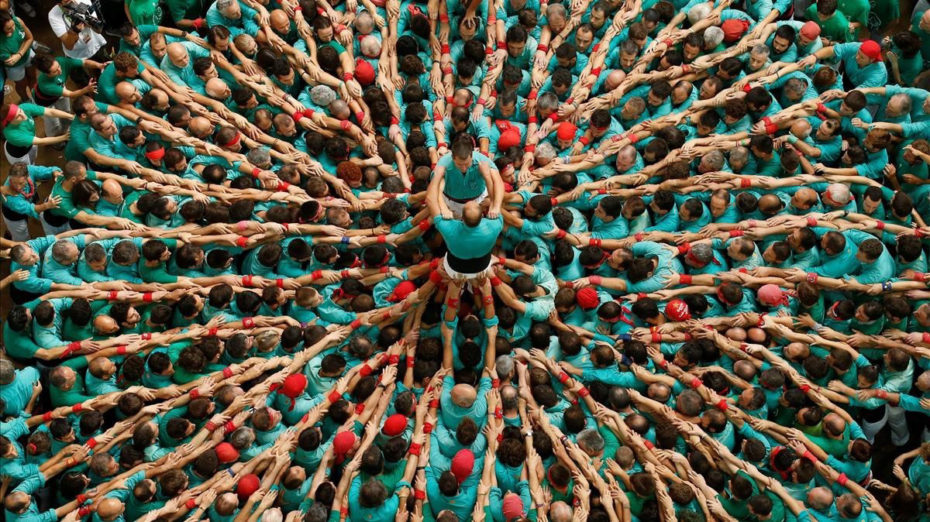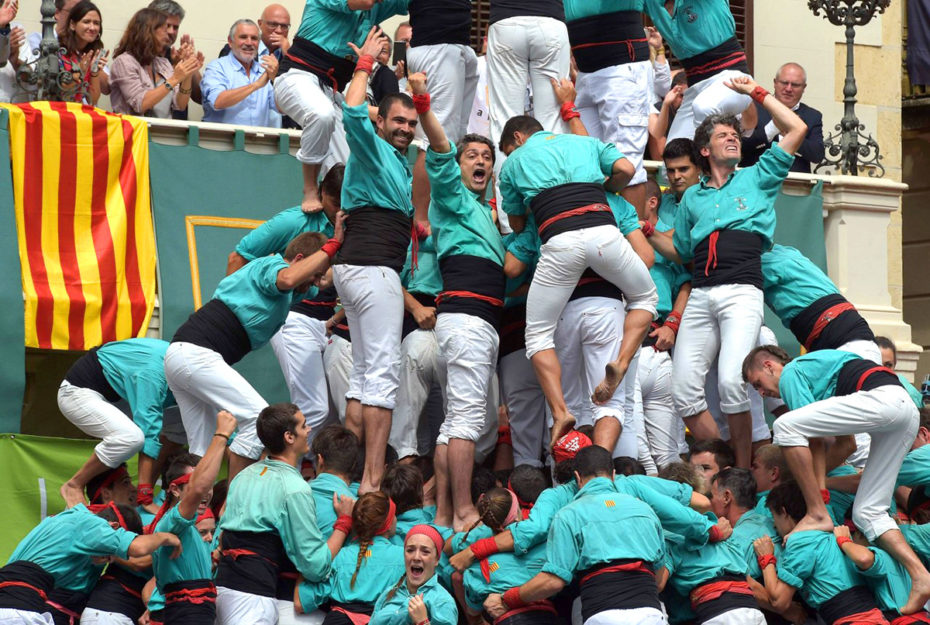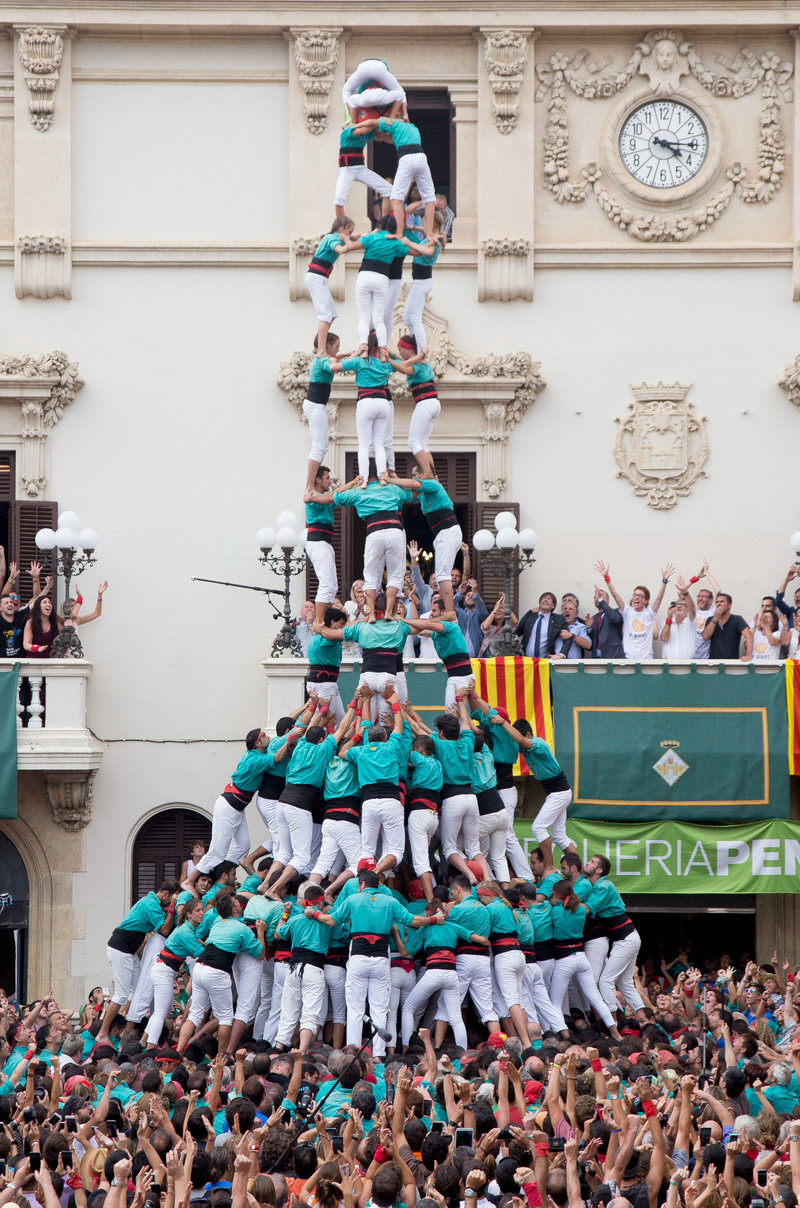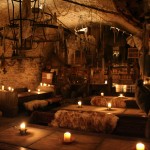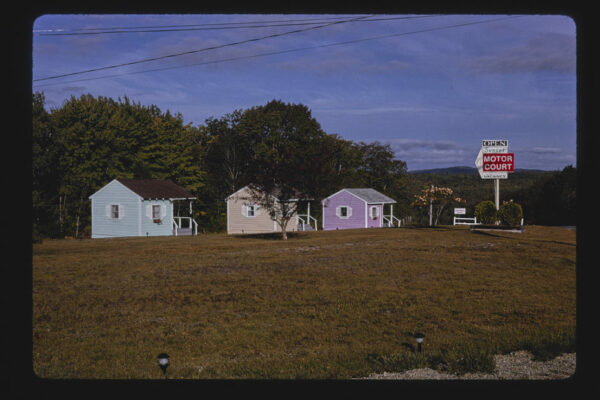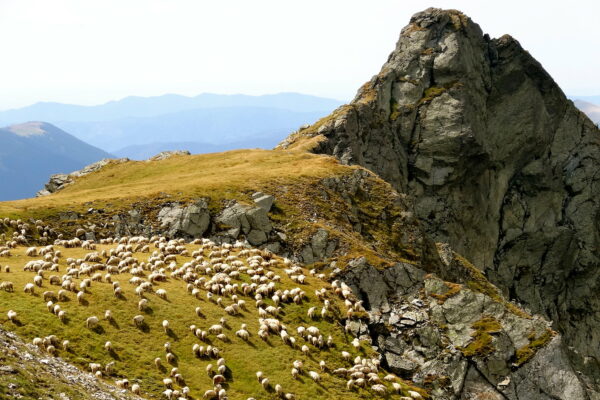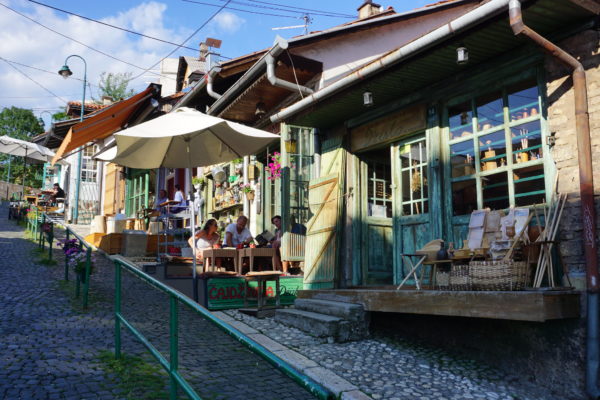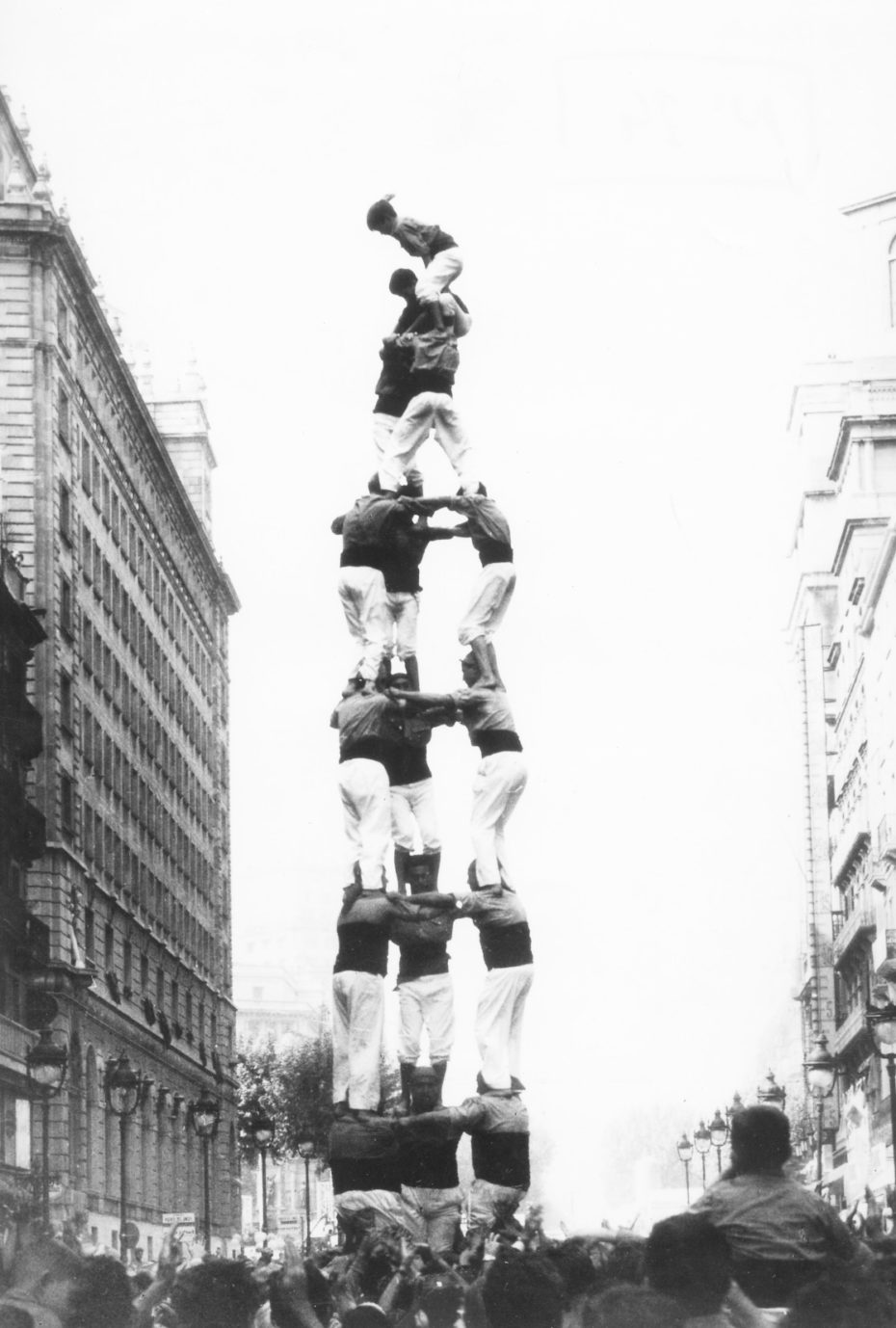
Behold Catalonia’s best collective party trick: assembling hundreds of supple Spaniards into a giant tower, or castell, up to 10 stories high. And this isn’t just empty acrobatics. It’s a UNESCO sanctified treasure (even though it’s made out of humans) with a story that has both mirrored, and challenged, the nature of its country’s patrimony…
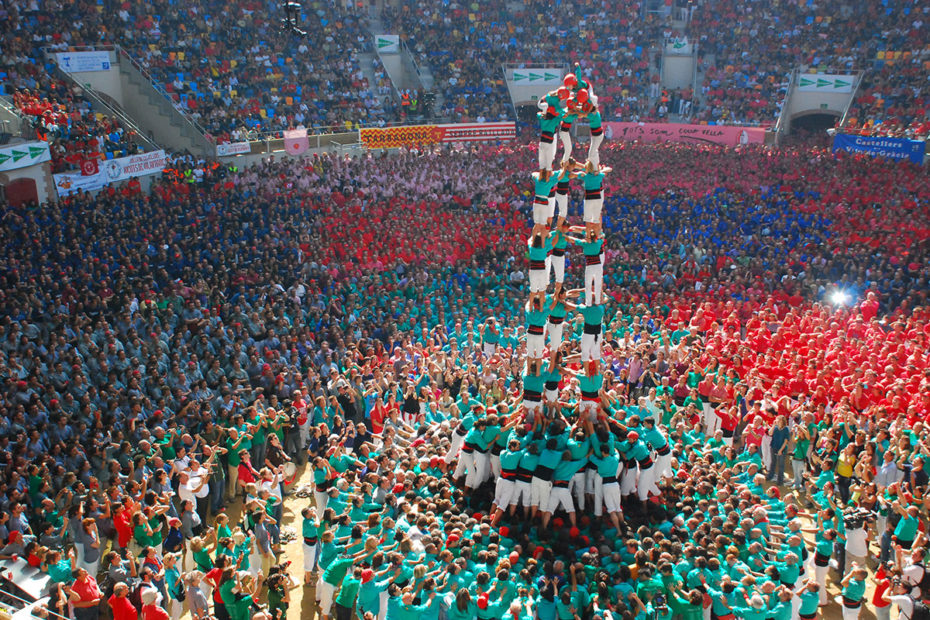
via The Smithsonian
We can trace Spain’s “castellers” all the way back to the city of Valls in the 18th century, when human tower building thing was just one aspect of a flute-filled folklore dance. People got really into the acrobatic bit, rivalries started forming, and groups like Xiquets de Valls took things to a new level.
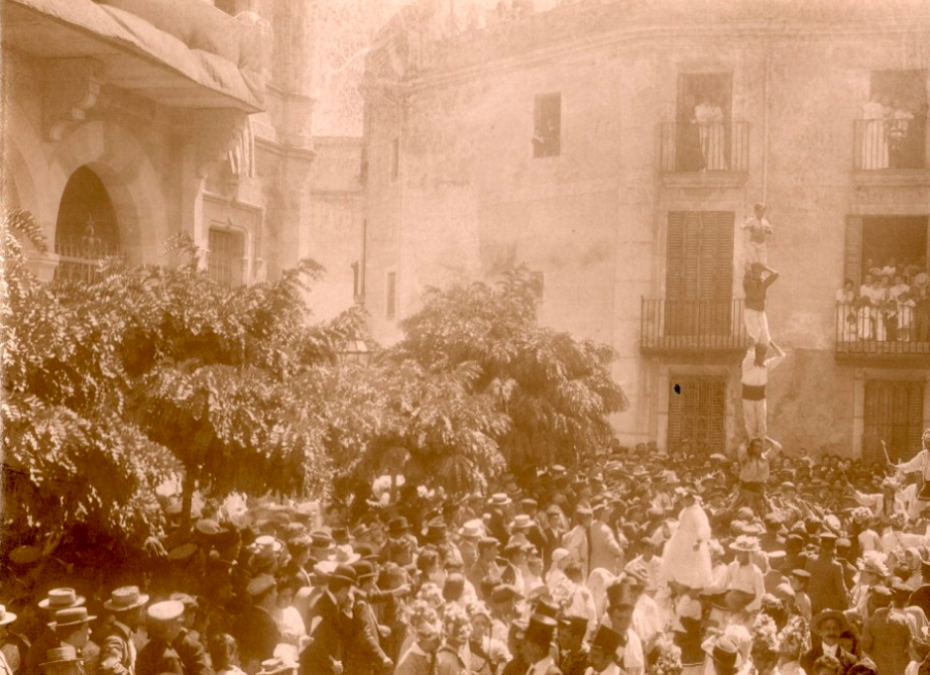
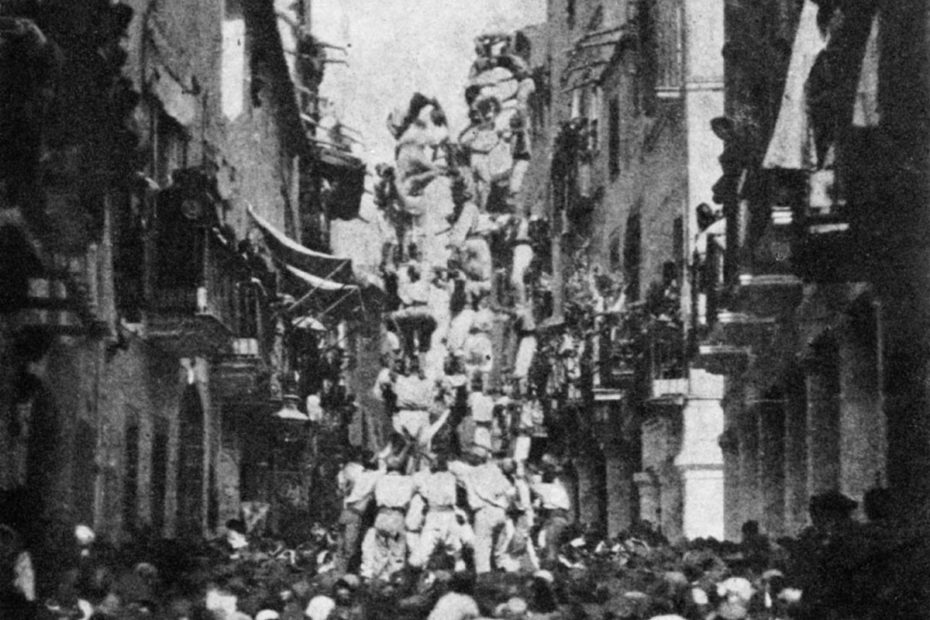
circa 1862
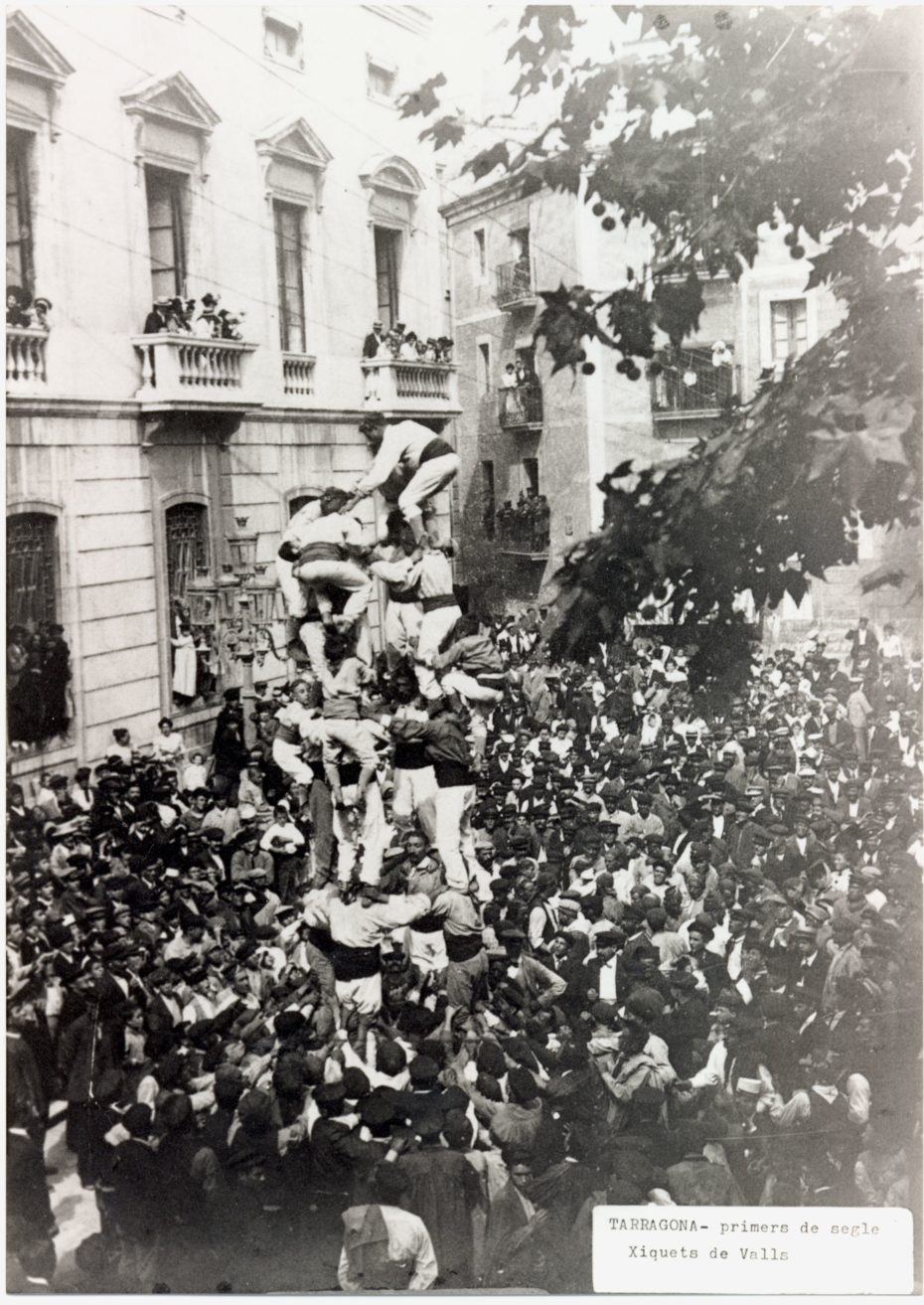
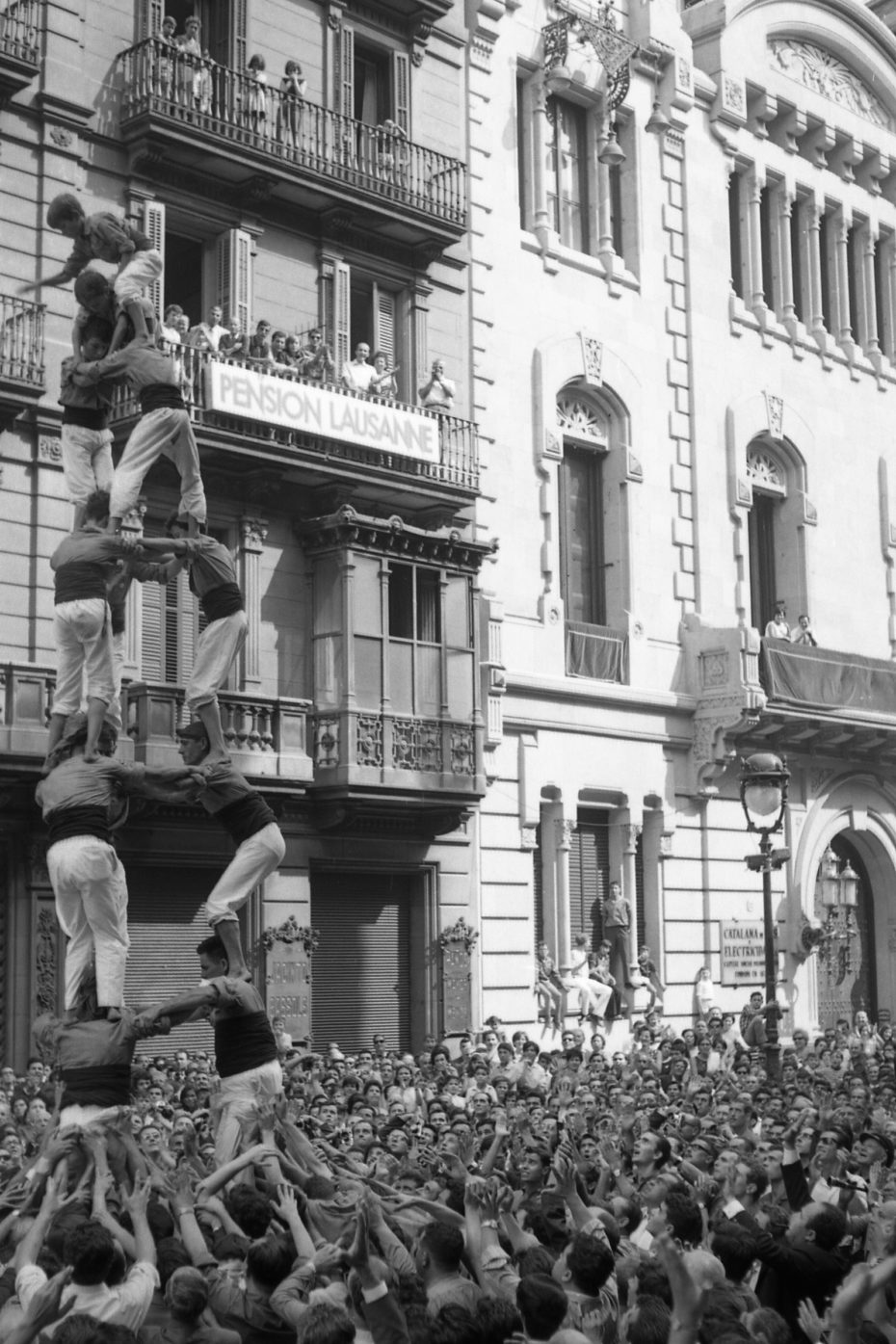
“When I arrived in Catalonia in 2012,” reported Smithsonian’s Pablo Giori in 2017, “the two things that struck me most were Catalan nationalism and castells. People were often talking about the global economic crisis threatening the European dream of the welfare state, that there’s ‘no future’ in Catalonia. Yet, on Sunday mornings, thousands of people wake up very early, get in their cars, and drive to one of over twenty locations to construct something collectively.”
“During Francisco Franco’s dictatorship from 1939 to 1975,” said Giori, “the regime forced the two main colles (teams) to merge, and there was no significant development of the practice until 1981”. The more democratic the country became, the more the castells multiplied.
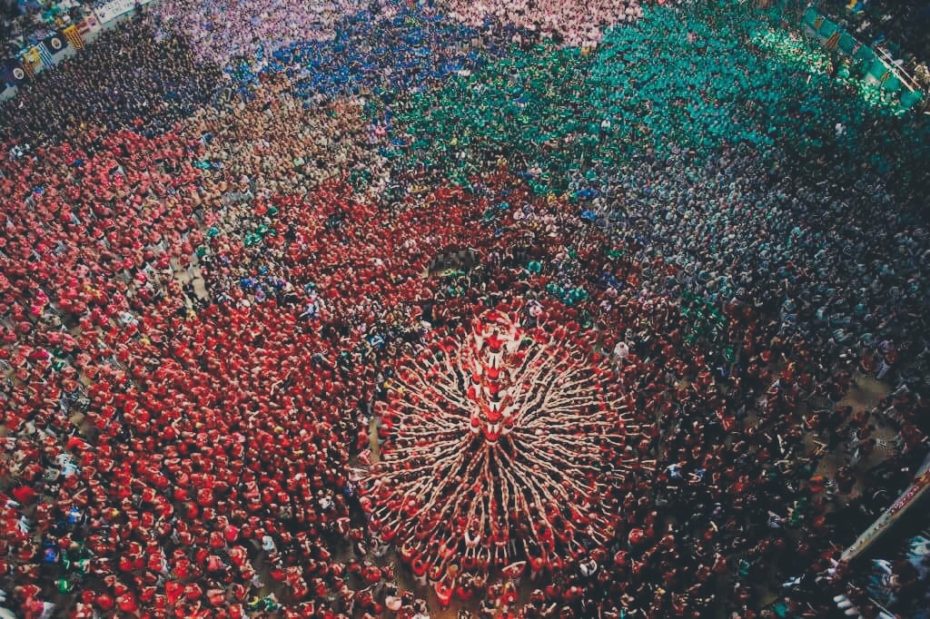
Ehab Saleh
As with every sport, Castell has its own set of rules, regulations, and really weird vocabulary:
Descarregat : the tower is completed to the top and successfully dismantled.
Carregat : the tower is completed to the top but falls during dismantling.
Intent : the tower falls before it is completed to the top.
Enxaneta (“rider”) : The topmost casteller, a child.
Tres de deu amb folre i manilles: three people per level in a tower of ten levels, with a second-level folre and a third-level manilles.
You also train for it with these wild ladders, so you don’t break your neck.
It’s still a competitive sport today — we’re in the thick of castell season, by the way (June to November) — just one with a lot more inclusivity. It’s such an emblematic pastime, that it’s even been commemorated by this sculpture in the city of Tarragona:
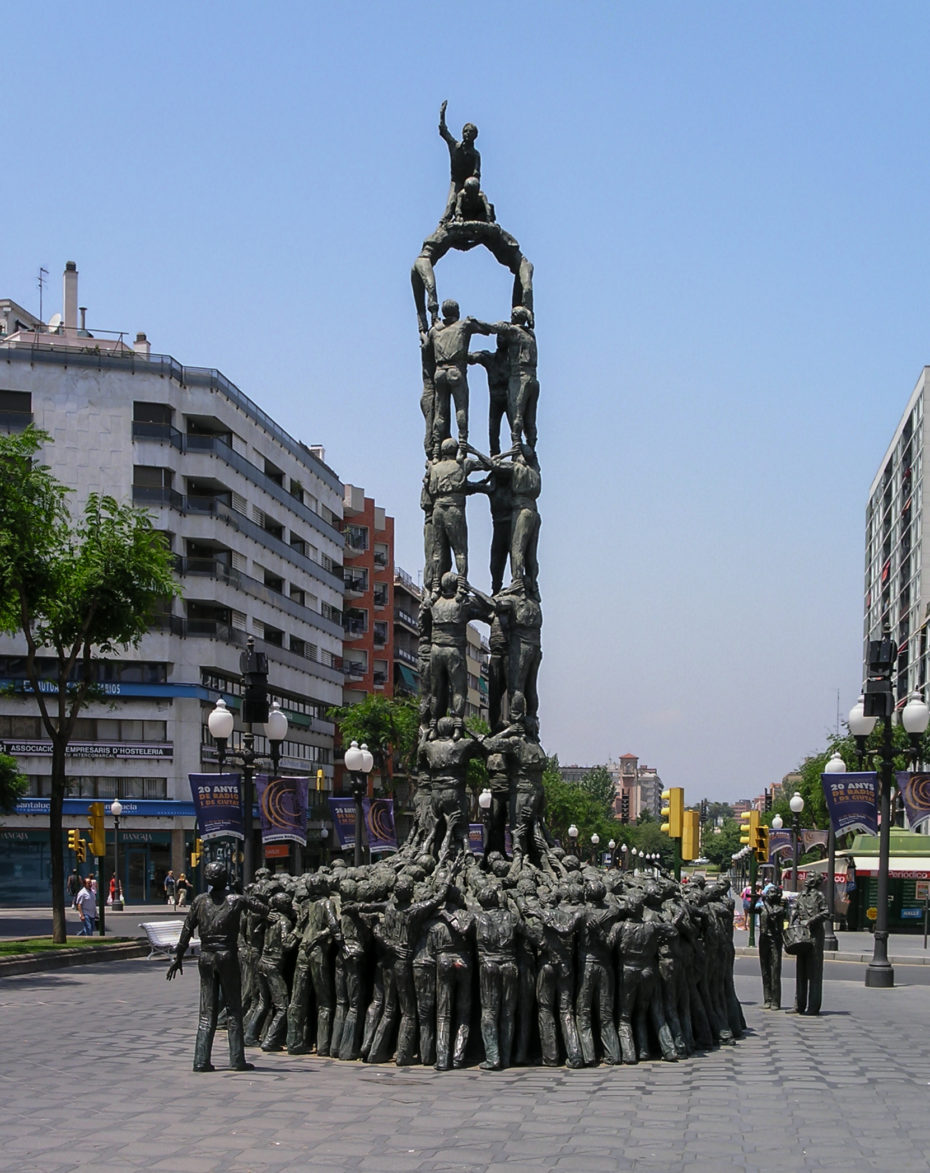
Wikimedia Commons
On November 16, 2010, castells were declared by UNESCO to be amongst the Masterpieces of the Oral and Intangible Heritage of Humanity.


